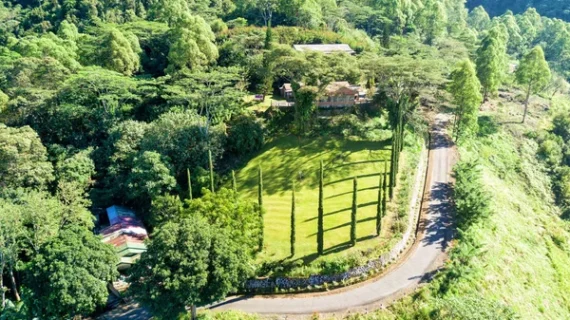Flores, an island in East Nusa Tenggara (NTT), is more than just a destination for its breathtaking natural landscapes. It is also a vibrant hub of cultural heritage, where ancient traditions and customs are preserved through the lives of its indigenous communities. For travelers seeking an immersive experience, visiting these traditional villages offers a unique glimpse into the rich history and customs of the people of Flores. Here are 10 must-visit traditional villages that showcase the island’s deep-rooted culture and stunning beauty.
1. Bena Traditional Village
Located in Tiwuriwu, Aimere District, Bena Traditional Village is nestled on a hill, offering panoramic views of Mount Inerie and lush green valleys. The village is home to nine local tribes, each residing in their own traditional houses. Visitors can witness the intricate art of weaving and purchase handwoven textiles, which start at around Rp 75,000. The journey from Labuan Bajo takes approximately 7-8 hours, making it a remote but rewarding destination.
2. Tololela Village
Tololela is best visited in the late afternoon when the scenery becomes even more enchanting under the golden hues of the setting sun. This village offers accommodation and local cuisine, allowing visitors to interact with the community. Travelers can participate in cooking sessions and taste authentic Flores dishes. The trek from Bena takes about an hour, making it a convenient stop for those exploring the region.
3. Gurusina Village
Situated in Watumanu Village, Jerebuu District, Gurusina is a historical site known for its ancient megalithic stones and ceremonial structures. These remnants offer a glimpse into the past civilizations of Flores. The village serves as a living museum of the island’s early history, preserving the legacy of its ancestors.
4. Melo Traditional Village
Just 45 minutes by car from Labuan Bajo, Melo Traditional Village greets visitors with a warm welcome, often marked by a gift of a woven scarf. The village is famous for its captivating Caci dance performances, which are a highlight of any visit. The cultural atmosphere here is lively and engaging, making it a popular spot for tourists.
5. Belaraghi Village
Belaraghi maintains the traditions of the Ngada people, with a focus on agriculture and ancestral customs. The village provides guest houses for visitors who wish to stay overnight. Guests can enjoy traditional foods such as boiled sweet potatoes, bananas, taro, coffee, and rice wine. This village offers a more intimate experience of local life.
6. Waerebo Village
Waerebo, located in Manggarai Regency at an altitude of 1,200 meters above sea level, is accessible via a 7-kilometer trek. The village is renowned for its unique conical houses called Mbaru Niang, which have been recognized as a UNESCO World Heritage Site. The journey to Waerebo is both physically challenging and spiritually rewarding, offering a profound connection to the island’s heritage.
7. Wologai Village
Wologai, situated in Wologai Village, Detusoko District, Ende Regency, is one of the oldest traditional villages on Flores, estimated to be over 800 years old. The village features 18 traditional houses, including a large one used to store tribal relics. Its long history and well-preserved architecture make it a fascinating destination for cultural enthusiasts.
8. Nggela Village
Nggela, located in Wolojita District, Ende Regency, is home to 17 traditional leaders, or mosalaki, and 14 thatched-roof houses. Unfortunately, a fire in 2018 damaged much of the village’s traditional structures. Despite this setback, the community continues to preserve its cultural identity, offering a glimpse into the resilience of the local people.
9. Todo Village
Todo, located in Satarmese Utara District, Manggarai Regency, was once the heart of the Manggarai kingdom. The village holds great historical and cultural value, as it was the residence of the first Manggarai kings. Exploring Todo provides insight into the island’s royal past and the evolution of its society.
10. Luba Village
Luba, situated in Ngada Regency, is close to Bena and shares similar architectural styles. However, its peaceful ambiance makes it an ideal place for a more tranquil cultural experience. Visitors can engage in meaningful interactions with the local community and gain a deeper understanding of Flores’ traditions.
Conclusion
Visiting these traditional villages in Flores is not just a trip—it’s a journey into the soul of the island. Each village offers a unique perspective on the cultural and historical tapestry of Flores, enriching the traveler’s experience. As you explore these communities, remember to respect their customs and traditions. By doing so, you contribute to the preservation of these invaluable cultural treasures for future generations.










